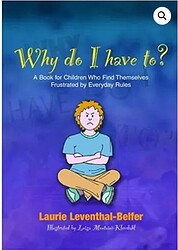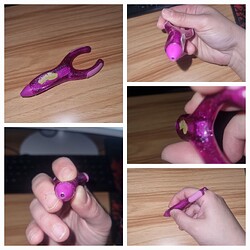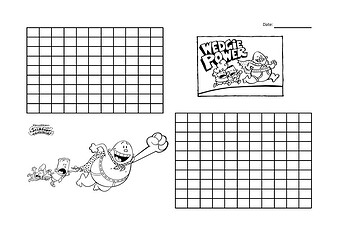Children are amazing in so many ways. They have undiscovered hidden talents, boundless energy, big emotions and a whimsical view of the world. They are all so different, they face different challenges and life experiences as well as having their own little personalities to grow and explore.
Something that is a contrast to that, is our rigid schooling system set up to be “one size fits all” in a world where everyone is so unique. Children with identical disabilities may have completely different experiences of that journey and what works for one child may not work for the next. There is so much trial and error involved in trying to get the right supports in place. Mainstream schools especially, are a box we try to place children in when most kids are round pegs. There will always be gaps. And sometimes, despite our best efforts, some children fall through.
It can be heart breaking as a parent to watch your child struggle all while trying to work out how you can support them. How do you help them learn how to learn? How do you help them develop the skills they need? How do you support them through all the feelings and self doubt they experience?
I work with children and teachers weekly, through a range of disabilities and learning issues. Today I am going to go through some common problems and some solutions that may or may not help. If you have tried something that I have mentioned and it didn’t work, or if you have an issue that I don’t mention, please feel free to ask in the replies. There is more than one way to cut a cake, and there are also so many new providers in the group who do various kinds of therapy. Working together, there is a good chance that there may be a solution. I will also mention some products in the article. I don’t sell or have any financial affiliation with them, they are just really good products that I have found work well in most circumstances. There is definitely a large variety on the market.
So let’s begin:
My child refuses to follow instructions
I am starting here because this issue is so very common and can also be incredibly persistent. It may also not be entirely the childs fault. When you look at conditions like oppositional defiance disorder there are a lot more factors than just getting them to behave for example. So what are some of the things that you can do as a parent.
When the case is very mild, the most effective management that I have seen work involved schools and parents providing consistency as a team. Imposing the same rules, the same corrective action and the same reward system. It also involved buy in from the child. This isn’t negotiation with your child, this is essentially your child agreeing to a behavioral contract with you. You will behave in a certain way if they will behave in a certain way. And having them agree to how those patterns look gives them more reason to be involved because they have emotional needs and currencies just like adults. There is an excellent book called “Why do I have to”.
The book is designed for your child to read through different experiences at home, at school and with friends that they may relate to. It also gives several ideas to manage those situations that your child can choose from. Having your child choose their method of management can make them more inclined to participate. It is not going to be something they get right every time at first, but with consistency it can be very effective over time. I also recommend breaks when you as a parent can take them. You can’t effectively manage a defiant child when you, yourself, are burnt out. Think of it like operating heavy machinery, don’t do it when tired, under the influence and without adequate training.
With moderate to more severe cases I always suggest parents attend either Parent-child interaction therapy (PCIT) or problem solving training. These situations can quickly escalate, can have flow on effects and can be very draining. It is important that, as the parent, you have the tools and support that you need to effectively manage the behaviours that you will experience. Early intervention is also incredibly important to the childs development. There are medication options and other therapies like social skills training for the child as well but equipped parents are the best tool in this case. Having a good allied health professional trained in managing behaviours is also incredibly important. Having a good behavioural support plan tailored to your child will help everyone work together to support them.
You also need to keep in mind that these children are experiencing a lot of negative external feedback. It can have an impact on how they view themselves and will also be exacerbating those behaviours. Boys are more likely than girls to have ODD rather than just not wanting to follow instructions. I also recommend the book “Bringing up boys who like themselves”. There is a version for girls as well but I am noticing in schools there is more of an epidemic of young boys struggling with self identity, social interaction and self esteem.
My child isn’t holding pencils and pens properly
It is fun to sometimes argue that the idea of the “proper way” to do anything is very subjective and a societal construct and that sometimes the best way is the way that works. But for the sake of this article schools advocate for a proper way to hold a pen or pencil. Some of the common hand holds that are considered incorrect include the following (excuse my big hands, I have no child hand models):
And we have the correct hand hold for a pen or pencil:
One of the simplest and least expensive tools I have found to help correct hand holds is a twist and write rocket pencil. I use them with a lot of year 2 and 3 students who have not correctly mastered the finger hold and with students with muscular issues affecting their hands. I use them so often that I have a small stash of them on my desk.
There are other options. I happen to like these because they are inexpensive to buy in bulk because students are often losing them or breaking them out of frustration, and they come in a range of colours so children have buy in getting to choose the one they like most. The arms on the back and the grooves on the front make it uncomfortable to use them incorrectly. I find that most students I work with graduate from these back to standard pencils after about a year of use. These also double as a fidget.
My child is writing really big and won’t write on the lines on the page
This is one that is really common, especially for kids who have cottoned on to the fact that pages fill faster if you write bigger. Often, even after months of trying, they are still refusing to stay on the lines. Sometimes those lines don’t make a lot of sense to children either, depending on how their spatial thinking development is going. One of the easiest things I try with children struggling with this issue is grid paper. Have your child write each letter into a square, the four borders make a lot of sense to quite a few children. They can leave a square blank to practice their spacing and full stops and commas get their own square. To encourage writing I also sometimes tailor the grid paper to the childs interests. For example I will have a writing space and then an image to colour at the end if they complete the activity:
This is another activity where children eventually graduate back to lines over time.
My child can’t sit or stand still
Wobble stools and wobble boards everywhere. This seems like a problem when in a class room setting but in the real world there are many ways around it. It is a symptom rather than a behaviour. Really the best thing is regular breaks from the activity that requires stillness but that isn’t always an option. Some of my clients parents purchased them rocker bottom shoes so that they would have a built in wobble option where ever they go. Most of the time this is a wait until they grow out of it thing. Although my partner is an adult with unmedicated ADHD and he is always busy with something. Children tend to grow into their comfort zones.
My child is refusing to write
There are a range of reasons why a child may be refusing to write. Once any kind of pain is ruled out, the rest are mostly emotionally based from boredom to anxiety. To encourage writing I normally either change the topic, medium or format of writing, and sometimes all 3.
It is important to work with the teacher on this for class room activities as they are the ones setting up the topics being brought up in class. If accommodations can be made where the teacher can allow your child some flexibility to change the topic as long as it still meets the writing goal, it can go a long way. Some students are born with a love of writing but others need that encouragement of being interested in what they are writing about.
If the child is refusing to hand write things, see if there is an option to use a tablet to type up their work. Some children are just not natural writers and others have a lot of anxiety about spelling and neatness creating a road block to getting work done. If they are more comfortable typing up their work it removes some of those barriers. There are people who argue that you need neat hand-writing for your future but as an adult I think I have hand written notes about 5 times in the last 12 months. Everything else was on a screen. I also have appalling hand-writing and it never stopped me successfully studying, working or owning a business. I think it is more important that children write in any way, than that their hand-writing be uniform and look nice.
Then there is changing the format. Sometimes children hate writing, but don’t realise writing is part of things they love too. Take comic books for example, a lot of children love them. Helping them create their own comic books can be a great way to get them writing without them realising they are doing it. I use a program called comica in schools to help children create comics that they can print out. Some children like instruction manuals. Getting them to write instruction manuals can be fun and a great way to get them practicing. Just remember to keep it fun, don’t turn their fun things into a chore.
My child is refusing to read
This is handled very similarly to writing. After eliminating eye sight and cognitive issues that require extra supports, find hidden reading practice and find things they enjoy reading and learning about.
One of my favourite things is taking children on school trips to places like the zoo and having them read the information signage to learn about the animals. You can also help children read menus, information on apps, getting them to read the cards in games like monopoly. Any and all reading practice is good and if they have an aversion to books, find the words elsewhere. Word games can help them with their spelling. Practicing and performing scripts can help them with their confidence, memory skills, pace and tone of voice. Plus it is just a fun thing to do with the family.
Find your childs interests and the motivation to read will follow.
My childs motor skills are delayed
Motor skills are all about activity and repetition. There are two types of motor skills, Gross and Fine.
If your childs gross motor skills are delayed you should get them more involved in big movement activities. The biggest things affected by a delay in gross motor skills are walking and balance. Play grounds, swimming, dance, cycling, ball games. Something I really enjoy combining is sound therapy with gross motor skill development. Changing speed to match music tempo, associating different music with different activities and even having wind up and wind down music can actually enhance a gross motor skill session.
If your child is having fine motor skill delays these are all your small hand eye coordination movements. These are especially important for being able to perform self care activities like brushing teeth later in life. Some of the most important skills include:
- The palmar arches curling palms inward. Coordinates the movement of fingers.
- Skilled side of the hand Using fingers together for precision grasping.
- Wrist stability Allows children to move their fingers with strength and control.
- Intrinsic hand muscle development is the ability to do small movements with the hand.
- Bilateral hand skills The coordination of both hands at the same time.
- Scissor skills Hand strength and hand-eye coordination
Digging for small items hidden in sand, finger painting (I prefer paint bags as they are less messy and reusable), using safety scissors, scribbling and colouring (art therapy is great for fine motor development), flicking switches, cooking skills and opening containers are all fantastic and simple examples of exercises you can do to help with their development.
Those were 7 very common issues that I see come up regularly. Like I said at the start not everything works for everyone and you might be facing some unique challenges with your children. Pop into the replies and let’s see if we can help come up with some suggestions using all of the excellent experiences in the group.





